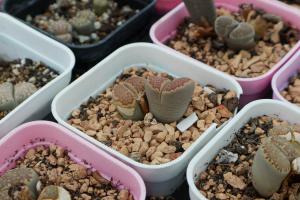Introduction
Mangrove plants are an intriguing species that have evolved to survive in some of the harshest and saltiest environments on earth. They are found in tropical and subtropical regions around the world and are vital to the coastal ecosystems in which they live. In this article, we will explore the reasons why mangrove plants are able to survive in salty water.
Adaptations
One of the key reasons that mangrove plants are able to survive in salty water is their impressive ability to adapt to their environment. These plants have evolved a range of adaptations that help them to overcome the challenges posed by living in a high-salinity environment. For example, some species of mangrove have developed special glands that are able to excrete salt from their leaves, preventing a build-up of harmful sodium in their system.
Other mangrove plants have adapted by developing complex root systems that allow them to filter and absorb freshwater from the salty soil in which they grow. These root systems also provide the plants with the stability they need to withstand strong tidal forces and protect against erosion.
Symbiotic Relationships
Another key factor that helps mangrove plants to survive in salty water is their ability to form symbiotic relationships with other organisms. In many mangrove ecosystems, crabs, snails, and other animals play an important role in helping to support the growth and development of mangrove plants. For example, some crabs are able to burrow deep into the soil around a mangrove plant, creating channels for oxygen to flow and helping to maintain a healthy soil structure.
Mangrove plants have also been found to form mutually beneficial relationships with other plant species. For example, some mangroves may grow in close proximity to salt-tolerant grasses, which provide additional structure and stability to the soil and help to prevent erosion.
Diversity
Mangrove plants are a diverse group of species, and this diversity is one of the key reasons why they are able to survive in salty water. Different species of mangrove have different tolerance levels for salt, and this allows them to occupy diverse niches within the ecosystem.
For example, some species of mangrove are able to grow in very salty water, while others are only able to survive in tidal zones where they are exposed to freshwater for part of the day. This diversity allows mangrove ecosystems to maintain a healthy balance and ensures that there is always a source of food and habitat for the animals that live within them.
Conclusion
In conclusion, mangrove plants are able to survive in salty water due to a combination of factors, including their impressive ability to adapt to their environment, their symbiotic relationships with other organisms, and their incredible diversity as a species. These traits have allowed mangrove ecosystems to thrive in some of the harshest and most challenging environments on earth and serve as a reminder of the incredible resilience and adaptability of life on our planet.

 how many times do yo...
how many times do yo... how many planted tre...
how many planted tre... how many pine trees ...
how many pine trees ... how many pecan trees...
how many pecan trees... how many plants comp...
how many plants comp... how many plants can ...
how many plants can ... how many plants and ...
how many plants and ... how many pepper plan...
how many pepper plan...
































